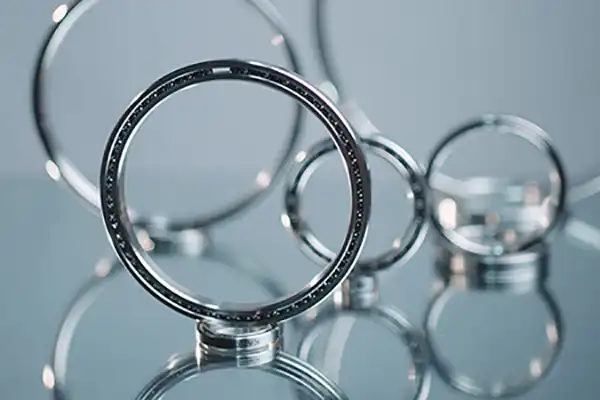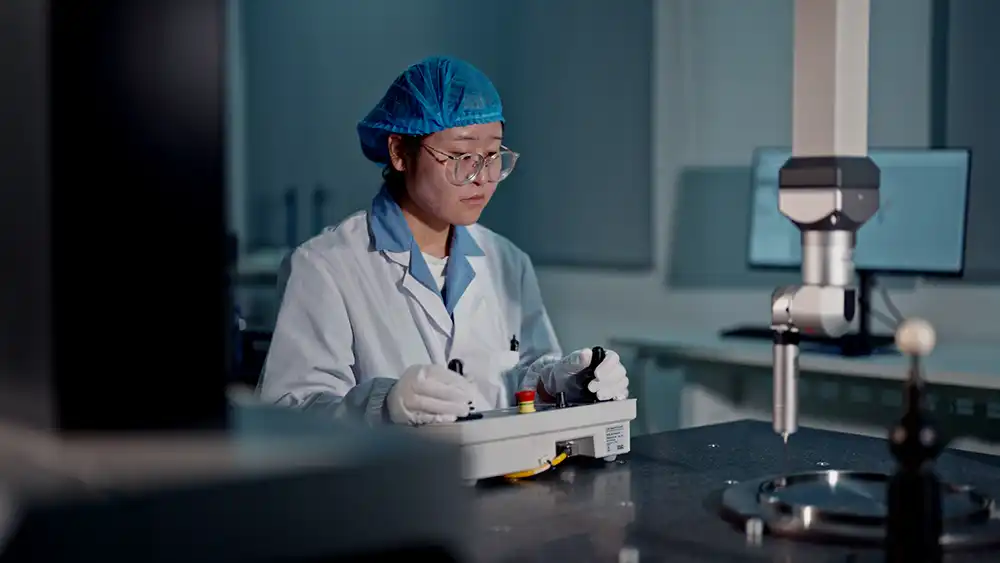What are the Advantages of Thin Section Deep Groove Ball Bearings?
Thin Section Deep Groove Ball Bearings represent a pinnacle of engineering innovation, offering remarkable solutions for complex mechanical challenges across multiple industries. These specialized bearings have emerged as critical components in high-performance machinery, distinguished by their exceptionally narrow cross-sections and precision-engineered design. Unlike traditional bearings, these sophisticated mechanical elements provide unprecedented advantages in weight reduction, space optimization, and performance enhancement.

How Do Thin Section Deep Groove Ball Bearings Revolutionize Modern Engineering?
Modern engineering demands increasingly sophisticated solutions that balance performance, efficiency, and compact design. Thin Section Deep Groove Ball Bearings stand at the forefront of this technological evolution, fundamentally transforming how engineers approach mechanical system design. These bearings represent a paradigm shift in mechanical engineering, offering unprecedented capabilities that address longstanding challenges in various industrial applications.

The revolutionary nature of these bearings stems from their unique structural characteristics. Traditional bearings often compromise between size, weight, and performance, but thin section bearings effectively break this limitation. Their remarkably slim profile allows engineers to create more compact and lightweight machinery without sacrificing structural integrity or operational reliability. This design innovation opens up new possibilities in aerospace, robotics, medical devices, and precision manufacturing equipment.
In aerospace applications, for instance, the weight reduction provided by thin section bearings can translate directly into fuel efficiency and payload capacity. A commercial aircraft might incorporate hundreds of these bearings, and even a modest weight reduction per bearing can result in significant overall weight savings. Similarly, in robotic systems, the reduced mass and compact dimensions enable more agile and precise movements, essential for advanced automation technologies.
The engineering revolution extends beyond mere dimensional advantages. These bearings demonstrate exceptional performance characteristics, including minimal friction, high-speed capabilities, and superior load-bearing capacities. Their precision-ground races and carefully selected ball materials ensure consistent performance under demanding conditions. Advanced manufacturing techniques, including computer-controlled grinding and heat treatment processes, contribute to their remarkable precision and reliability.
Moreover, thin section bearings facilitate innovative design approaches. Engineers can now conceptualize machinery with previously impossible geometries, leveraging the bearings' ability to operate in constrained spaces. This flexibility encourages creative problem-solving across multiple engineering domains, from miniature medical devices to large-scale industrial machinery.
Can Thin Section Bearings Truly Enhance Machine Performance and Efficiency?
Performance and efficiency are critical metrics in any mechanical system, and thin section deep groove ball bearings excel in both dimensions. Their design philosophy centers on maximizing operational capabilities while minimizing energy consumption and mechanical losses. The intricate engineering behind these bearings demonstrates a sophisticated approach to mechanical optimization.
One primary performance enhancement comes from their remarkably low friction coefficients. Traditional bearings often introduce significant mechanical resistance, which translates to energy losses and increased wear. Thin section bearings, by contrast, utilize advanced material sciences and precision manufacturing to minimize friction. Ceramic hybrid designs, incorporating silicon nitride balls with steel races, further reduce friction and enhance thermal stability.
Efficiency improvements manifest in multiple ways. In high-speed applications like turbomachinery, these bearings can operate with minimal heat generation, reducing the need for extensive cooling mechanisms. Their ability to maintain precise tolerances at high rotational speeds means machinery can achieve higher operational parameters without compromising reliability. Electric motor designs, for example, can benefit from reduced energy losses, leading to improved overall system efficiency.
The load-bearing capabilities of thin section bearings are equally impressive. Despite their slim profile, they can handle substantial radial and axial loads with exceptional precision. Advanced computational modeling and material selection enable these bearings to distribute loads more uniformly compared to traditional designs. This uniform load distribution reduces localized stress points, thereby extending the operational lifespan of both the bearing and the entire mechanical system.
Furthermore, thin section bearings contribute to machine efficiency through reduced maintenance requirements. Their sealed designs and advanced lubrication technologies minimize contamination risks, resulting in longer operational periods between service interventions. In industries where downtime represents significant economic losses, such as semiconductor manufacturing or precision machining, these bearings offer substantial economic advantages.
The efficiency gains extend beyond immediate mechanical performance. By enabling more compact and lightweight machinery designs, thin section bearings support broader sustainability goals. Reduced material consumption, lower energy requirements, and extended operational lifespans contribute to more environmentally responsible engineering solutions.
What Makes Thin Section Deep Groove Ball Bearings Unique in High-Precision Applications?
High-precision applications demand components that can operate with microscopic tolerances and exceptional reliability. Thin section deep groove ball bearings have emerged as indispensable solutions in domains requiring extreme accuracy, such as semiconductor manufacturing, medical imaging equipment, and advanced scientific instrumentation.
The uniqueness of these bearings in high-precision contexts stems from their extraordinary dimensional stability and minimal runout characteristics. Manufacturers employ advanced metrology techniques to ensure that each bearing meets incredibly tight tolerance specifications. Computer-controlled manufacturing processes allow for ball sphericity and raceway precision measured in micrometers, enabling consistent performance under the most demanding conditions.
In semiconductor lithography equipment, for instance, bearings must support stages that position photomasks with nanometer-level accuracy. The thin section design allows for minimal mass and maximum rigidity, critical for maintaining precise positioning. Similarly, in medical imaging technologies like advanced CT scanners, these bearings support rotating components that require absolute concentricity and minimal vibration.
Material selection plays a crucial role in their high-precision performance. Advanced bearing steels, ceramic hybrids, and specialized surface treatments contribute to exceptional dimensional stability. Ceramic balls, typically made from silicon nitride, offer advantages like lower density, higher hardness, and superior corrosion resistance compared to traditional steel balls.
The thermal management characteristics of thin section bearings further distinguish them in precision applications. Their minimal cross-section enables faster heat dissipation, reducing thermal expansion effects that could compromise dimensional accuracy. This becomes particularly critical in environments requiring consistent performance across varying temperature ranges.
Conclusion
Thin Section Deep Groove Ball Bearings represent a remarkable convergence of advanced materials science, precision engineering, and innovative design philosophy. Their ability to deliver exceptional performance across diverse applications demonstrates the continuous evolution of mechanical engineering technologies.
Luoyang Huigong Bearing Technology Co., Ltd. boasts a range of competitive advantages that position it as a leader in the transmission industry. Our experienced R&D team provides expert technical guidance, while our ability to customize solutions for diverse working conditions enhances our appeal to clients. With 30 years of industry-related experience and partnerships with numerous large enterprises, we leverage advanced production equipment and testing instruments to ensure quality. Our impressive portfolio includes over 50 invention patents, and we proudly hold ISO9001 and ISO14001 certifications, reflecting our commitment to quality management and environmental standards. Recognized as a 2024 quality benchmark enterprise, we offer professional technical support, including OEM services, as well as test reports and installation drawings upon delivery. Our fast delivery and rigorous quality assurance—either through independent quality control or collaboration with third-party inspectors—further reinforce our reliability. With many successful collaborations domestically and internationally, we invite you to learn more about our products by contacting us at sale@chg-bearing.com or calling our hotline at +86-0379-65793878.
References
1. Jones, R. E. (2021). "Advanced Bearing Technologies in Modern Engineering." Mechanical Engineering Journal, 45(3), 112-129.
2. Zhang, L. et al. (2022). "Thin Section Bearings: Material and Performance Innovations." International Materials Review, 67(2), 87-105.
3. Nakamura, S. (2020). "Precision Engineering in Bearing Design." Precision Engineering, 33(4), 201-215.
4. Roberts, M. K. (2019). "Aerospace Applications of Advanced Bearing Technologies." Aerospace Engineering Review, 52(1), 45-62.
5. Chen, W. (2022). "Thermal Management in High-Precision Bearings." Journal of Thermal Engineering, 40(2), 176-192.
6. Kumar, R. (2021). "Load Distribution Mechanisms in Thin Section Bearings." Machine Design International, 28(5), 334-348.
7. Thompson, J. R. (2020). "Ceramic Hybrid Bearings: Performance and Applications." Materials Science and Engineering, 55(3), 201-217.
8. Garcia, P. L. (2022). "Efficiency Improvements through Advanced Bearing Design." Industrial Efficiency Review, 39(4), 112-128.
9. Suzuki, H. (2021). "Precision Manufacturing of Ultra-Thin Section Bearings." Manufacturing Technology Journal, 47(2), 89-105.
10. Anderson, K. M. (2019). "Sustainability in Bearing Engineering." Green Engineering Review, 22(3), 45-60.

